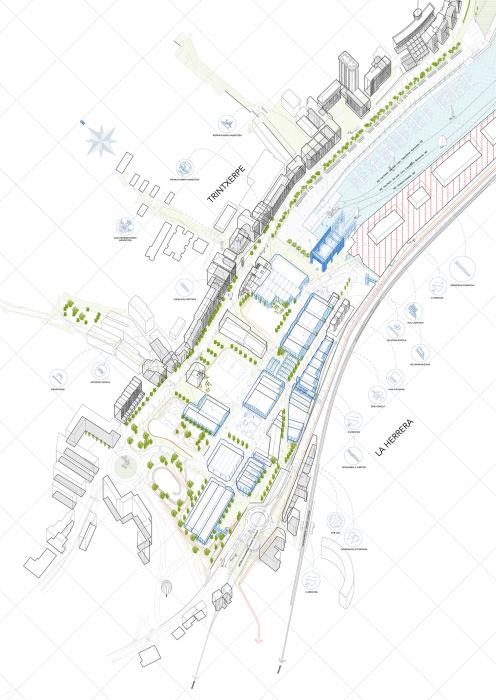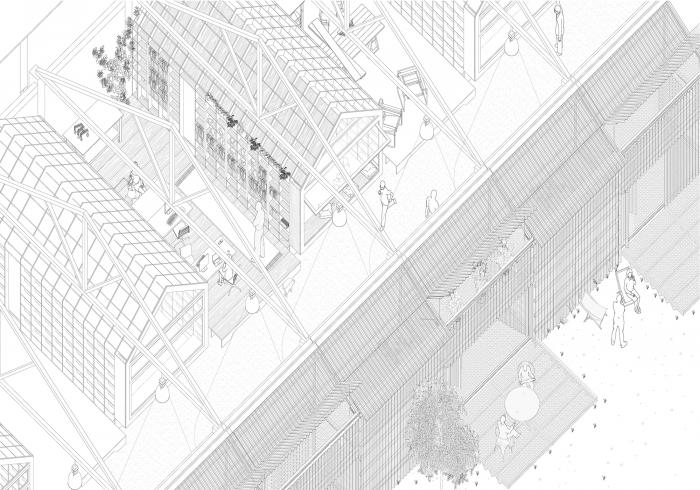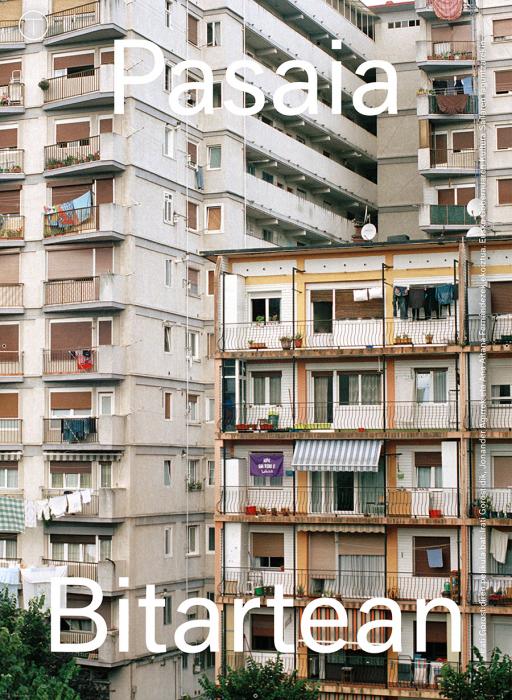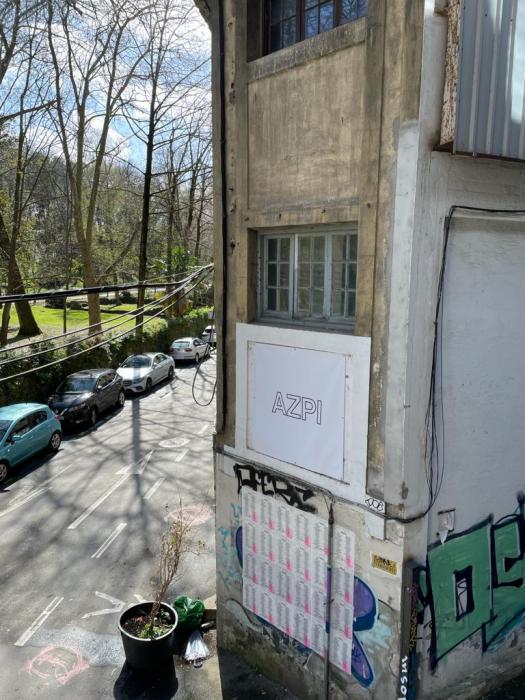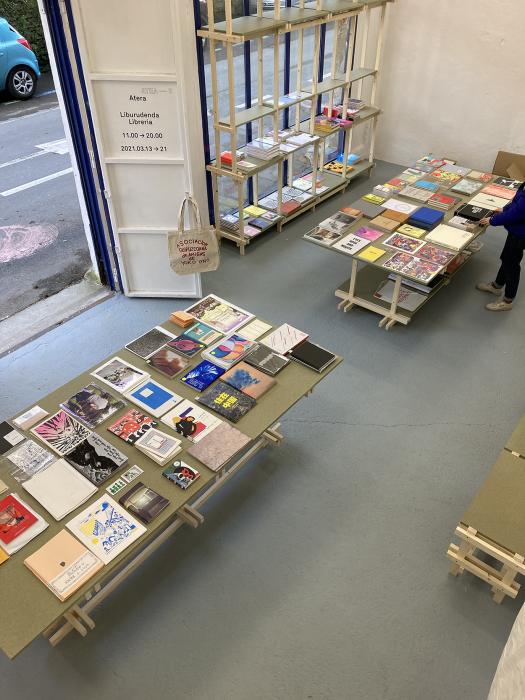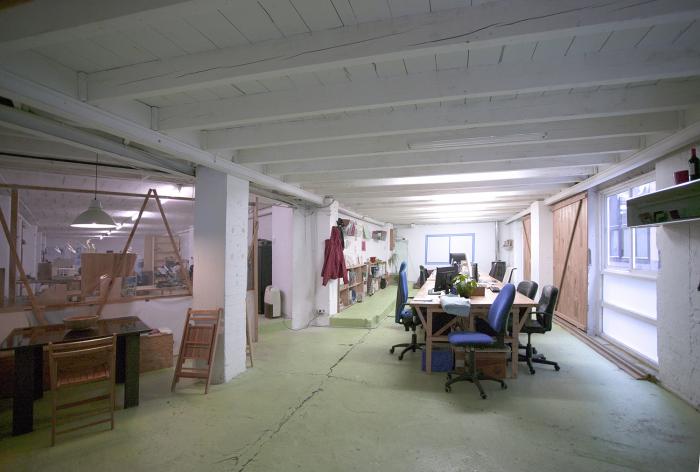I. SUMMARY INFORMATION
Project
267753
Status
Submitted
Award category
Reinvented places to meet and share
You want to submit
NEW EUROPEAN BAUHAUS AWARDS : existing completed examples
Project title
BITARTEAN
Full project title
BITARTEAN. Tools for an ongoing meanwhile.
Description
BITARTEAN (Meanwhile in Basque) is an urban strategy focused on the temporary revitalisation of spaces in urban suspense. Initiated from an architectural and planning perspective, the project has later been developed cinematographically and finally put into practice by creating AZPI Kultur Elkartea, a project installed in a degraded building in Egia (Donostia, Basque Country) generating a space for the empowerment and fostering of artists, architects, designers and other cultural expressions.
Where was your project implemented in the EU?
Spain
Gipuzkoa. Basque Country
Mundaitz kalea 14, behea
Donostia-San Sebastián
20012
When was your project implemented?
Has your project benefited from EU programmes or funds?
No
Which programme(s) or fund(s)? Provide the name of the programme(s)/fund(s), the strand/action line as relevant and the year.
II. DESCRIPTION OF THE PROJECT
Please provide a summary of your project
BITARTEAN is an urban strategy focused on the temporary revitalisation of spaces in urban suspense that has been developed over the last 10 years in three phases. The project focuses on the creative and untapped potential of the 'meanwhile', a dead time that planning leaves behind and that this project proposes to fill with projects of different kinds with a double intention, to give them use without degrading the existing and to enrich later regeneration processes with what has been previously tested.
BITARTEAN was born as an urban project called 'Pasaia Bitartean: Tools for an ongoing meanwhile' where a system of rehabilitation and activation of the disused pavilions of the port area of Pasaia was proposed as a place of experimentation for the initiative (https://upcommons.upc.edu/handle/2099.1/19600). Subsequently, the project adopted the cinematographic format with the making of the film 'Pasaia Bitartean', which delves into the importance of memory and time in urban processes and the need for a transversal view of urban processes (http://pasaiabitartean.net/eng.html). Finally, the project explores the possibility of research in a practical way. AZPI Kultur Elkartea is an association of architects, designers and artists who, in a collaborative and self-managed way, have recovered an abandoned space and turned it into a space that provides a different approach to culture, generating exhibitions, hosting creators and creating a network within the cultural environment of Gipuzkoa (Basque Country).
With these three experiences, BITARTEAN is a project that has been worked on academically and theoretically, has been enriched by film research and has been tested on a small scale in AZPI Kultur Elkartea. The next step of the project is the presentation to institutions and governmental officials and the implementation of the project as an urban methodology in a broader way.
Please give information about the key objectives of your project in terms of sustainability and how these have been met
The sustainability of the project is defined in opposition to obsolescence. The project defends that declaring a building obsolete is unsustainable, it must be used, re-signified and renovated. The project detects and combats 3 types of obsolescence:
URBAN OBSOLESCENCE - Evolutionary City
BITARTEAN proposes a way to fight against the practice of leaving entire areas of our urban environments in suspense and proposes to take advantage of these buildings during the long transition time (years, decades), thus covering an empty space of time. In this way, BITARTEAN proposes a change in the way of understanding urban planning, avoiding the tabula rasa and favouring a city that is built by fragments in a more organic way.
NOSTALGIC OBSOLESCENCE - Memory
BITARTEAN underlines the importance of industrial environments in the collective memory of the city. The project proposes to avoid situations of demolition of industrial environments and to give value to their presence in the collective memory as heritage.
ECONOMIC OBSOLESCENCE
BITARTEAN proposes the use of these buildings for various purposes, from leisure to economic activities. This project argues that overcoming the obsolescence of the use of these spaces leads to their sustainability and that of the city in which they are located, as well as the services it offers, diversifying and boosting the city's economic activity.
The measures proposed here have been put into practice in AZPI as a space for the generation of companies and economic activity, giving value to a forgotten building in the history of Donostia and preventing its abandonment from giving rise to an urban void.
Please give information about the key objectives of your project in terms of aesthetics and quality of experience beyond functionality and how these have been met
Is there anything sadder than an abandoned building? Is there a clearer indicator that something is not working than a city with empty spaces? This is the basic approach that articulates the idea of beauty in BITARTEAN. The project does not propose a preconception regarding the idea of beauty, but there is a clear premise: that any space in use is better than empty space.
EMPOWERMENT AS BEAUTY
The project proposes the opening and cession of spaces to groups that request them and that acquire the commitment to take care of them, maintain them and improve them. BITARTEAN believes in the idea of empowering people to improve their environment. The project trusts in letting society organise itself and take co-responsibility for its built urban environment, moving away from the preconception of institutions as entities that solve all the socio-cultural needs of citizens.
FREEDOM OF USE AS BEAUTY
These types of limbo spaces tend to be freer since, due to their situation of uncertainty, they lose much of their market value. They give rise to uses outside of regulations and measures that, in many cases, foster the free development of certain artistic expressions. BITARTEAN considers that the laxity of use of these spaces makes them potential generators of beauty.
MEMORY AS BEAUTY
The project defends the beauty of adapting disused spaces and reviving spaces of the past with ideas of the present and a vision for the future. BITARTEAN is based on this idea to generate beauty, building from layers of history, without reconstructive nostalgia, but being aware of their existence and assimilating them into a continuum.
The project defends the relevance of AZPI for this reason, for being a space from 1928 of great heritage value in the industrial history of the city, with a contemporary activity and full of young people wanting to build their future from there. The project considers that these three elements are key to achieving a beautiful environment.
Please give information about the key objectives of your project in terms of inclusion and how these have been met
Inclusion within the project can be understood on two scales. The first, on an urban scale, which we call TO TAKE PART and on a smaller scale, implemented in AZPI Kultur Elkartea, where MIXING and OPPORTUNITY are key concepts.
TO TAKE PART
The large spaces to be regenerated in cities are always spaces that give rise to great debates among citizens, but their participation in them does not usually go beyond filling in a form. BITARTEAN proposes the possibility of articulating participation based on use. Together with associations and interested groups, urban environments and complex urban development processes can become more transparent by facilitating the use of these environments. In this way, BITARTEAN considers that it gives rise to a way of understanding participation from the bottom up and not the other way around.
MIXING
In these vacant spaces, people tend to mix. As Jane Jacobs defined when describing the uses that came to be housed in the buildings of Greenwich Village or the way Gilles Clement talks about the richness of what he calls the 'third landscape', if these spaces can be occupied and filled with life, a great mixing of people can happen in them, mixtures of people that hardly occur in other environments. This has already happened at AZPI, where creators from different backgrounds have been able to meet where they would not have done so in other environments, or with the spaces and buildings nearby, where an enormous diversity is found.
OPPORTUNITY
If these spaces are made available to people, opportunities arise for people who would otherwise find it difficult to develop their projects, businesses, dreams, etc. The use of suspended spaces leads to lower prices and easier access, enhancing affordability on an urban scale. AZPI has been an example of this, since its beginnings it has been full of young people from different backgrounds who wanted to start their careers in Donostia.
Please give information on the results/impacts achieved by your project in relation to the category you apply for
BITARTEAN has finally been presented in 'Reinvented Places to Meet and Share' because we consider that generating a meeting and mixing point for people is the key element of the proposal.
This potential has been seen in our project at AZPI, where a very run-down premises under constant threat of demolition has become a meeting point for people of all kinds, who organise personal and collective projects, produce and organise cutting-edge art and cultural exhibitions, train people to be able to develop themselves and collaborate with various collectives, companies and individuals. In this way, AZPI has managed to become a benchmark space in Donostia and Gipuzkoa, as an independent cultural space.
AZPI is also a space where the three keys of the New European Bauhaus converge in a very positive way, generating an aesthetic response where there was abandonment, proposing sustainable logics for the city and for people, rejecting obsolescence and creating a point of inclusion for all, where the equality of people and their empowerment is a key element of the proposal.
Please explain the way citizens benefiting from or affected by the project and civil society have been involved in the project and what has been the impact of this involvement on the project
AZPI, as the tangible part of the project has reached a high level of relationship with the community and civil society.
AZPI is an association open to people from the cultural field in a broad sense. Anyone can join AZPI and since its creation 5 years ago, more than 30 people from the cultural field (architects, filmmakers, designers, web developers, urban planners, curators, artists, producers, educators, sculptors, actresses, etc) have been members.
In addition to its members, AZPI has built up a network of groups and people from the world of culture who use the space. AZPI is a space open to any proposal and since its creation the space has hosted more than 50 independent events.
Finally, AZPI has been running its ATEA programme since 2019, in which exhibitions are organised. In its last edition, ATEA_5, it received the works of more than 60 publishers from all over Spain, which were exhibited in the space and put on sale. In this edition, moreover, empty premises lent by the residents' association were set up as free spaces for Covid, which generated a large, delocalised publications fair.
All of this has attracted institutions, enterprises, schools and individuals to contact AZPI and the project around it.
Please highlight the innovative character of the project
BITARTEAN proposes an innovative vision of current urban processes. After the general implementation of the planning processes of the last century, the project tries to work on one of the key shortcomings of these processes.
BITARTEAN, on the other hand, proposes a logic of citizen participation and open management of the public and the city that is highly innovative and based on citizen empowerment in the definition of urban processes.
These empowerment processes, on the other hand, give rise to innovation processes that are developed in these spaces proposed by the project. Within AZPI, for example, a variety of projects have been developed that have later been generalised outside AZPI. From web applications to innovative cultural programmes, spaces of this type are fertile ground for innovation.
The cultural programmes of AZPI Kultur Elkartea, on the other hand, have given rise to a logic of internationalisation and innovation that has subsequently enriched the proposals of the members of the collective.
Please explain how the project led to results or learnings which could be transferred to other interested parties
The model proposed in AZPI and BITARTEAN has already received the interest of institutions, both from the cultural and urban planning fields in Donostia-San Sebastián. This knowledge and the experience of AZPI Kultur Elkartea is valuable from both spheres due to the innovation processes proposed by the project.
On one hand, from a cultural perspective, the generation of cultural programmes from the creators themselves, as carried out in AZPI's ATEA programme, has received attention from the Basque Government's EREMUAK programme, from which it receives a grant, as well as from Tabakalera, where the collective has been invited on several occasions and where it has offered workshops.
From an urban and planning perspective, the whole process experienced by AZPI due to the urban planning limbo in which the building finds itself, is a knowledge that AZPI members have had to acquire in order to legalise and normalise the activity generated in the space. On this side, contacts with institutions have been less notable.
On the other hand, we believe that the knowledge generated within the members of the collective is very remarkable, and that from a more individual but collective point of view, they have contributed knowledge to an important segment of the city's cultural sphere.
Is an evaluation report or any relevant independent evaluation source available?
No
III. UPLOAD PICTURES
IV. VALIDATION
By ticking this box, you declare that all the information provided in this form is factually correct, that the proposed project has not been proposed for the Awards more than once under the same category and that it has not been subject to any type of investigation, which could lead to a financial correction because of irregularities or fraud.
Yes
